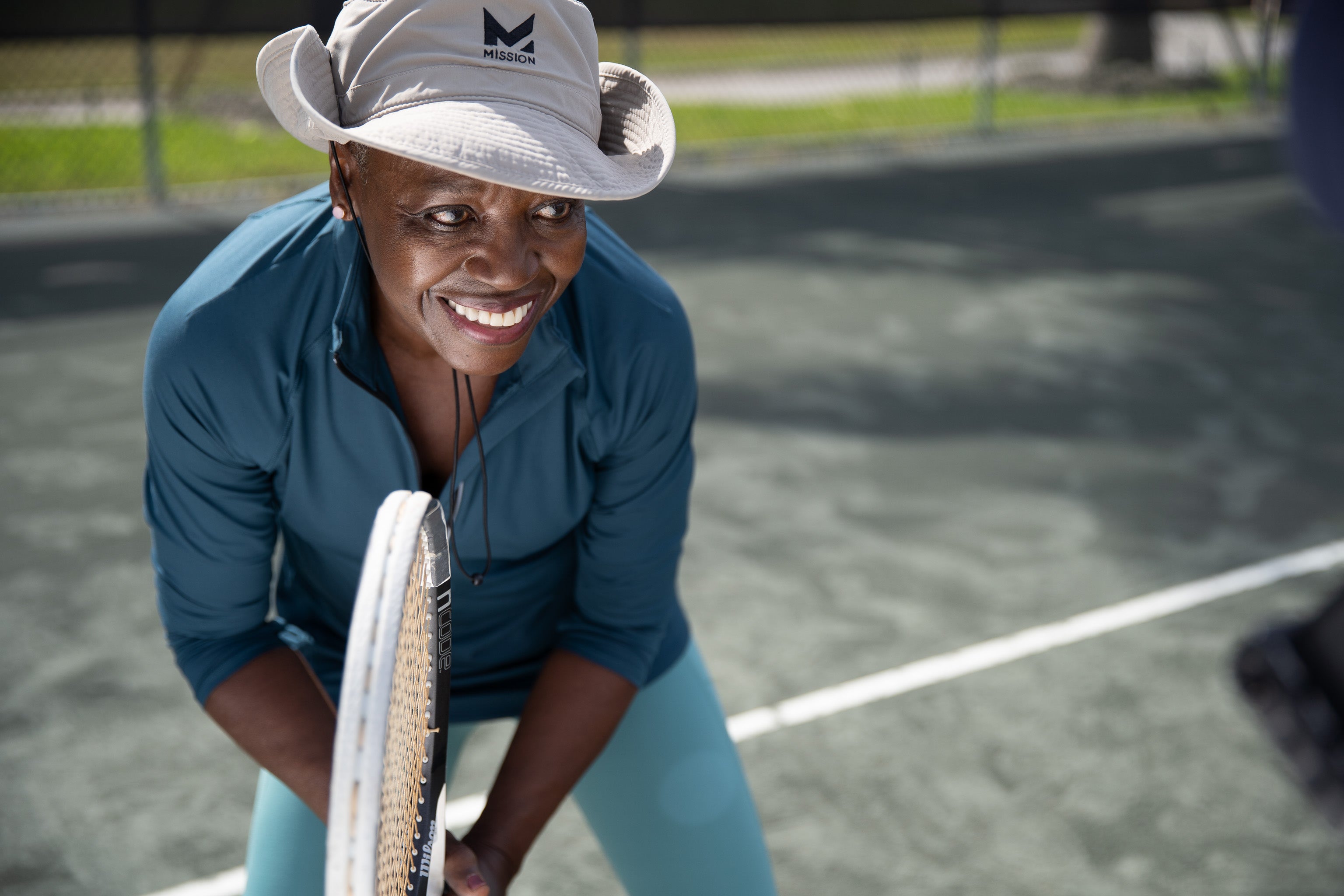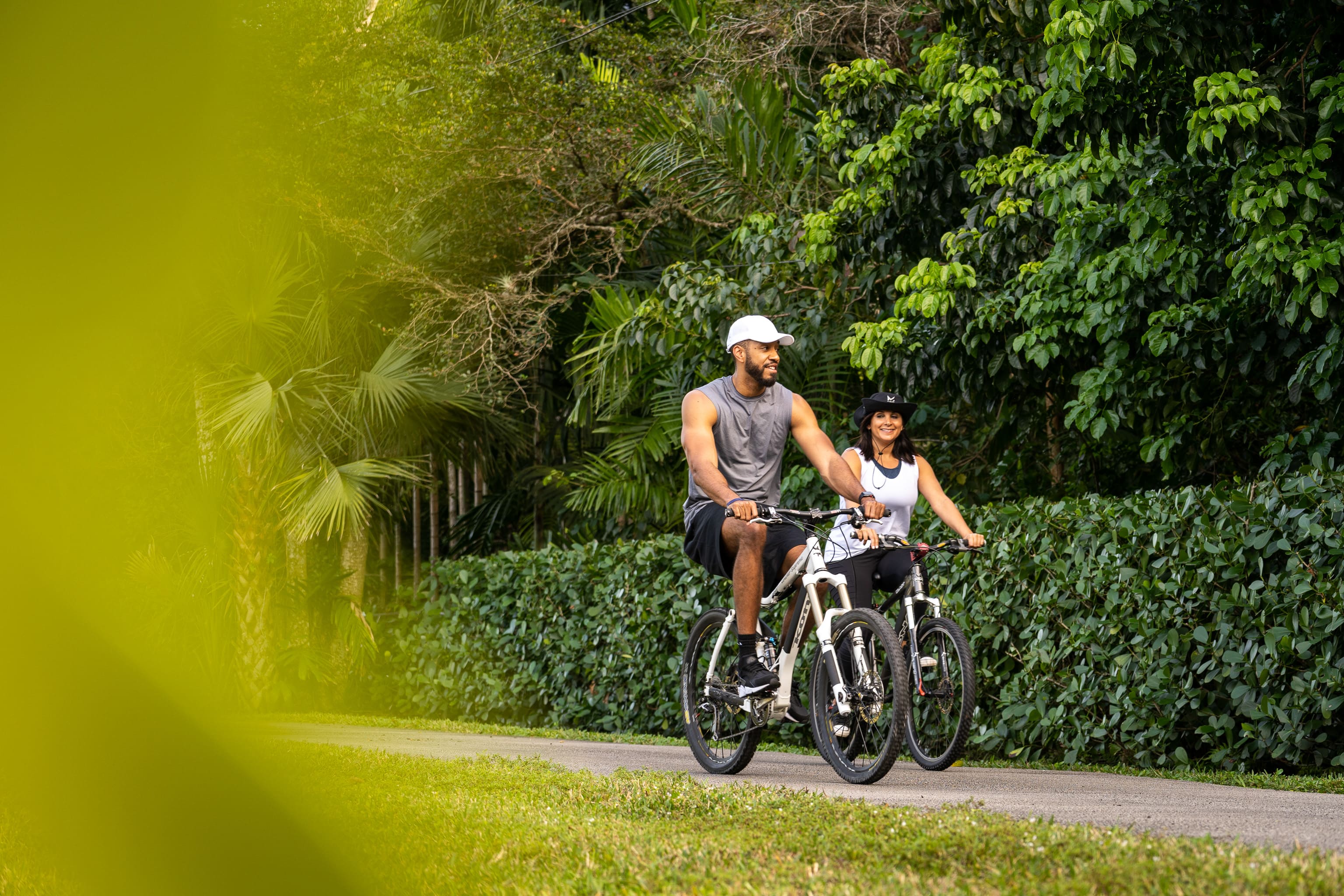Strategies For Exercising in the Heat and Improving Performance

Heat can have a significant impact on athletic performance, and if you don't make adjustments, it could lead to serious health issues. The good news is that there are strategies you can use to help your body acclimate to the heat and still maintain peak performance.
At Mission, it's our full-time job to think about how we can help our customers get the most out of their routines — whether on the job, in the gym, or anywhere else they engage in strenuous activity — while managing their body temperatures and mitigating the effects of heat. Our clothing is designed to support these goals, and while we firmly believe that something like our cooling visor is a significant asset to anyone working out in hot weather, it's important to recognize that there are other adjustments you will need to make in order to stay safe in the heat.
Here are some performance tips to consider when working out in hot weather:
Camel Up
Your body loses fluids through sweating, and if you don't replace those fluids, you will become dehydrated. The first step in warding off dehydration is to drink plenty of fluids before you even begin your workout.
"Camel up" by drinking 16-20 ounces of water or a sports drink about two hours before you start exercising and again a half hour before you begin. If you go into your workout low on fluids, it's going to be nearly impossible to catch up. So, make sure you give your body a chance to absorb the fluids before you start sweating by drinking early and often.
Dress for Success
You might be tempted to wear as little clothing as possible when it's hot outside, but that's not always the best idea. Wearing the right gear can help keep your body temperature down.
Look for athletic clothing that is made from breathable fabric. You want clothing that will allow air to circulate and help wick away sweat. It's also important to wear light-colored clothing since dark colors absorb more heat. Mission's line of cooling gear is designed with all of these factors in mind, so wearing something like our Performance Socks can help keep your feet cool and comfortable while you are giving it your all.
Adjust Your Expectations
For most people, excessively hot weather means they aren't going to be able to perform at their usual level. If you are used to running five miles every day, you might need to cut back to three miles when it's particularly hot and humid outside.
It's also important to listen to your body. If you are feeling dizzy, nauseous, or lightheaded, stop your workout immediately. These are all signs of dehydration or heat exhaustion, and if you don't take a break and cool down, it could progress to heat stroke, which is a life-threatening condition.
Choose Your Time Wisely
Stay cool by exercising in the early morning or evening hours when it is cooler outside. If you have to exercise during the heat of the day, try to find a shady spot to do your workout.
You should also avoid exercising directly on asphalt or concrete since these surfaces can absorb and radiate heat, making it harder for your body to cool down. If possible, exercise on grass or another type of soft surface. If your usual run is through downtown, consider taking up trail running through a wooded area to take advantage of a forest's cooling effects.
Monitor Your Environment
In addition to paying attention to the temperature, it's also important to monitor the humidity. When the air is saturated with moisture, it makes it harder for your sweat to evaporate and cool your body down. This can lead to overheating, dehydration, and, if left too long, heat stroke.
You can use a tool like Mission's Cooling Towel to help cool off and lower your body temperature, but these tools work best when you account for the big picture and continuously assess the situation.
Be Smart About Supplements
Many athletes rely on supplements to help them improve their performance, but some of these products can actually increase your risk of heat-related illness. Caffeine, for example, is a diuretic (although it doesn't dehydrate you), which means it will make you urinate more frequently and can lead to dehydration. If you are going to exercise in the heat, limit your caffeine intake before you start.
Creatine is another supplement that can be problematic in hot weather. This substance causes your muscles to retain water, which can lead to cramping. If you are going to be exercising in the heat, it's best to avoid creatine or take a smaller dose than you would normally.
Take Frequent Breaks
If you are working out in the heat, it's important to take breaks frequently and drink plenty of fluids.
Stop and rest in a shady area every 20 minutes or so, and drink 8-10 ounces of water or a sports drink. Wetting your clothing can also help you cool down — especially if you're using any of Mission's cooling fabrics that use revolutionary technology to get cool and stay cool when they get wet. You can use your break to re-wet a Mission hat to keep your noggin from overheating when you're getting after it.
Avoid Direct Sunlight
If possible, try to keep out of the direct sunlight. This will help you stay cooler and also prevent sunburn, which can lead to heat exhaustion and all other nasty outcomes. If you can't stay out of the sun, find sun protection clothes with a minimum of 50 UPF, and if possible, clothing that is designed to keep the wearer cool.
Now, if only there were a company that made great-looking clothes that provided immediate, lasting cooling ...
Don't Forget Your Electrolytes
Dehydration is a major cause of heat-related illness, so it's important to make sure you are drinking enough fluids. But water alone won't cut it — you need electrolytes to help your body absorb and retain the fluid.
Electrolytes like sodium and potassium help regulate fluid balance in the body, and when you sweat, you lose them. That's why it's important to replenish them by drinking sports drinks or taking electrolyte supplements. You can also eat foods like bananas, sweet potatoes, and avocados, which are all high in potassium.
Monitor your body's response to heat
Watch for signs of heat exhaustion or heat stroke, such as dizziness, headache, nausea, rapid heartbeat, etc. If you experience any of these symptoms, stop exercising and move to a cooler area. Drink fluids and seek medical attention if necessary. If possible, hop into a cool shower to try and get your body temperature down to a safe and comfortable range.
Know Your Limits
At the end of the day, there is no magic technique that is going to help you exceed your own physical limitations. Some people can run an ultramarathon in Death Valley, but other people would be risking their lives even to attempt it.
The key is to know your body and how it responds to heat. If you're not used to exercising in hot weather, start slow and gradually increase the intensity and duration of your workouts. And if you feel like you're overheating, don't push through the discomfort — take a break and cool down.
Listen to your body, and you'll be able to enjoy working out in the heat without putting your health at risk. Just make sure you have the right gear to help you stay cool and comfortable. And if you need any athletic performance tips, we know a great blog that can help. ;-)
0 comments

